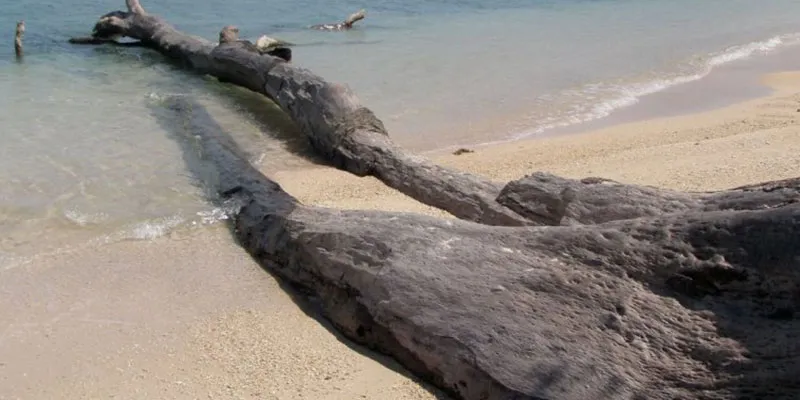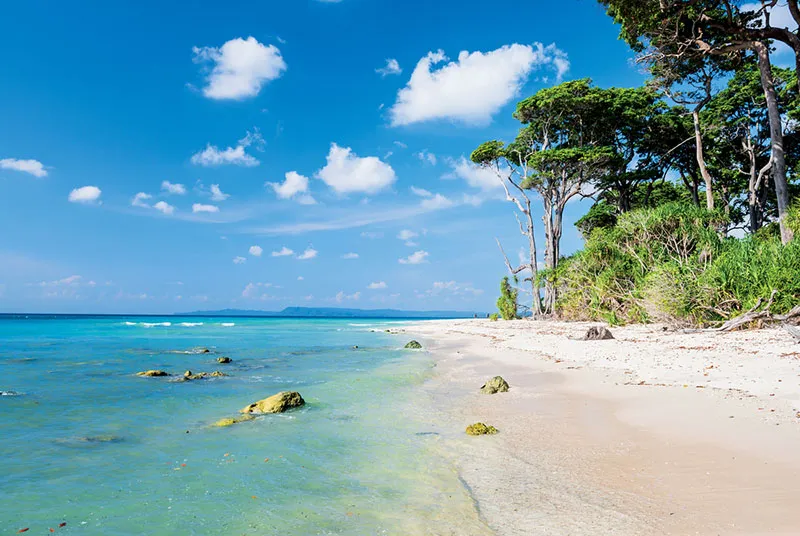[Book Review] Alienating the indigenous people of Andaman and Nicobar Islands in the name of development
The indigenous community of the Andaman and Nicobar Islands has been systematically alienated from their land by the colonial and post-colonial policies. A new book chronicles the change.
Pankaj Sekhsaria’s recent book Islands in Flux — The Andaman and Nicobar Story is a collection of around 20 years of his writings on the environmental and conservation concerns faced by the indigenous tribal communities of the region. Unlike his previous book, The Last Wave, a factual fiction adventure story dealing with love, longing and loss, this one is a collection of contemporary developments in the islands. The book is divided into seven parts and several chapters each dealing with the societal and ecological facets of the islands. Issues related to the environment, wildlife conservation and development policies that threaten the island’s indigenous communities have been chronicled by the author, who is a long-time member of the NGO Kalpavriksh.

Alienation of islanders
The book begins with the section Setting the context, in which he writes about the history of the alienation of the island communities living there for over 40,000 years. The author takes a dig at the history writers of the modern democratic Indian state who have left gaping holes in their writings by not studying the ancient indigenous communities — the Great Andamanese, the Onge, the Jarawa and the Sentinelese. It is here that the author mentions, “If the real and complete history of the islands is ever written, the British would not be more than a page and India could only be a paragraph.”
The indigenous people have been systematically alienated from their resources by the British colonial policies and the post-colonial development-oriented policies of India. The Britishers set up a penal colony in the islands in 1858, the Japanese occupied the islands during the World War II, and during the post-colonial period, thousands of settlers from mainland India were brought to the island. Though the islanders put up a fierce fight to defend their territories, the social fabric of the island communities has been violently torn apart and their populations decimated while the settlers outnumbered the original inhabitants. The region is witness to nation-building exercises, Hinduisation of ‘uncivilized junglees’ and even an attempt to rename the islands. The author calls this as an attempt to “reclaim what was never yours”. No effort has been made by way of scholarship or historical studies to take the islanders’ point of view.
Forestry is the chief source of revenue in cash in the islands but the system of forestry did not suit the region. The author quotes an official report by the Department of Environment, Government of India that argues that “the forestry system was leading to a preponderance of deciduous elements in the evergreen system that would eventually destroy the whole island ecosystem”. The carrying capacity of the islands has been long exceeded, the author says. Ill-conceived schemes like cattle rearing were introduced for a community that does not consume milk. Tourism is a concern in the islands, which have been declared as ‘global biodiversity hotspot’.
The pristine forests and the people living in the Jarawa tribal reserve, which covers half the island, is under threat because of the ill-conceived Andaman Trunk Road that separates the reserve land from the rest of the island. The Jarawas, for whom the forests have been a home for ages, have been reduced to begging around the Trunk Road that runs through the reserve. The road has been controversial due to the negative fallouts on the island’s ecology and the indigenous people. The Supreme Court had in 2002 passed an order to close it; the island administration chose to ignore it. Its closure was absolutely critical to protect the Jarawa community, the author says.
Islands turn colonies
The author chronicles the colonising of the islands in a chapter of the same name and discusses how the settlers look down upon the indigenous communities. Tension continues between the tribal communities, especially the ancient tribal community of Jarawas and the settlers over land rights and there is a lack of political will to ease this even as the population of the Jarawas has been reduced to a few hundreds. “There are opinions that the Jarawas should be assimilated into the modern world, but it is clear that it is exactly this contact with the outside world that is rapidly pushing them towards the brink,” the author states.
In the chapter, A brief history of logging, Sekhsaria provides an account of the timber operations in the Andaman. He notes how as a part of India’s colonisation scheme, mainlanders were settled here. This was done to strengthen India’s claim over the islands. Incentives were offered to settlers by way of land and royalty-free timber. Timber-based industry was promoted and liberal subsidies offered. Forests were exploited to benefit settlers who had little stake in the islands or its natural resources. Timber offered for millions decreased after the 2002 Supreme Court order. The order was in response to a petition by three NGOs to stop logging. The Supreme Court order that banned the cutting of naturally grown trees in the Andaman and Nicobar islands were welcomed by the environmental rights groups. But logging continued within the tribal reserve.
In the section Environment, ecology and development, the author stresses the need for evolving sensible conservation policies. The author discusses the consequences of introducing exotic species into the island systems. This has led to irretrievable loss of native species and ecosystems. “The Andaman and Nicobar islands are unsurpassed in their botanical wealth, and the ethnomedical knowledge of the tribals who live here is astounding,” he says.

Image: Shutterstock
In the section December 2004 and its aftermath, the author discusses the turmoil caused by the tsunami of December 26, 2004, which killed around 3,500 people in the fragile Andaman and Nicobar islands, the worst-hit area in India. The tectonic activity due to the third deadliest earthquake of the world in the last 100 years caused a significant shift in the islands’ geography with a permanent average uplift of four to six feet, while parts of Nicobar islands went significantly under, with the southernmost tip, Indira point on Great Nicobar island, going 15ft down. Apart from dealing with how the tsunami destroyed the island, the section also highlights how the people picked up the pieces and started all over again.
Leave them alone
The tsunami waters inundated large areas of the islands causing damage to its coastal and marine ecology. In the aftermath of this turmoil, ecologists have suggested ‘no intervention’ and that ‘leaving areas alone should be the preferred management option’. A disturbing facet of the islands in recent times is its water scarcity. The islands have been facing severe water shortages even during the pre-tsunami period but this got worse after 2004. Fresh water sources got hit by the tsunami.
Talking about the faulty development planning, the author discusses how former president late Abdul Kalam in 2005 in the aftermath of the tsunami announced a grandiose vision for the development of the Andaman and Nicobar islands. This included ecologically perilous components like deep sea fishing, exploitation of bamboo, value-added coconut products and tourism.
A central thread of Sekhsaria’s book has been the neglect and acculturation of the Jarawas, and their losing scuffle with the outsiders. The book presented in a journalistic manner handles the issue very sensitively and the author exhibits a keen understanding of the history of the indigenous people and its ecology.
(Disclaimer: This article, authored by Amita Bhaduri, was first published on India Water Portal.)


![[Book Review] Alienating the indigenous people of Andaman and Nicobar Islands in the name of development](https://images.yourstory.com/cs/wordpress/2017/08/wikimedia_commons.jpg?mode=crop&crop=faces&ar=2%3A1&format=auto&w=1920&q=75)




